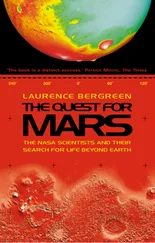Today they “land.” Television crews are running up and down the stairs, looking for the best place to plant their tripods. “At first they are all down there,” says a bemused IBMP staffer who has been posted on the mezzanine above the Habitable Module. “And now you see the small anthill here.”
A recording of military fanfare and some last-minute reportorial elbowing heralds the opening of the hatch. The six men step outside and smile at the cameras. They are accustomed to being filmed. They’ve been monitored day and night for the past three months. (The shorter isolation served as a practice run for the 500-day simulation scheduled to start in 2010.) The crewmen wave until it begins to seem silly and one by one they drop their arms. They are dressed in blue “flight suits.” Walking back to the subway later, I pass the grounds staff of a neighboring apartment complex dressed in the same blue coveralls, bestowing the fleeting impression that cosmonauts are moonlighting as gardeners and handymen.
Isolation-chamber experiments have been a lucrative cottage industry at IBMP for decades. I came across a paper from 1969, detailing a yearlong simulated mission to an unstated destination. The setup was similar to Mars500, though with small, entrancing exceptions, like the “self-massage” that ended each day. The article ran in an academic journal, but you felt as though you were paging through a sort of homosexual Ladies’ Home Journal. Photographs show the three men preparing dinner, tending plants in the greenhouse, listening to the radio in their turtlenecks and sweater vests, and cutting one another’s hair. The journal paper made no mention of spats or maladaptive symptomology, of Bozhko going after Ulybyshev with the barber scissors. The papers rarely include these details. Press conferences don’t either. Press conferences are a time for canned speeches and upbeat generalities.
Like this: “We had no problems, no conflicts,” Mars500 Commander Sergei Ryazansky is saying. The press conference is being held in a room on the second floor, meaning that most of the camera crews had to fold up their tripods and charge back up the stairwell, affording yet more glee for IBMP staff. There are maybe 200 chairs for 300 bottoms.
“Everyone was supporting each other.” After ten minutes of fluff from Ryazansky, a reporter lays it out: “We in the media would like to have some gossip. Can you give some examples of personal tensions?”
They cannot. Pretend astronauts have to be discreet because many of them want to be real astronauts. The Mars500 crew includes one aspiring European astronaut, one aspiring cosmonaut, and two cosmonauts awaiting flight assignments. Volunteering for a simulated mission is a way to show the space agencies you’ve got at least some of what it takes: A willingness to adapt to a situation, rather than trying to change it. Tolerance for confinement and stripped-down living conditions. Emotional stability. An accommodating family.
Another reason Ryazansky won’t gossip about his crewmates is that, like most isolation chamber volunteers, he signed a confidentiality agreement. Space agencies want to know what happens when you lock people in a box with no privacy and not enough sleep and depressing food, but they are wary of letting the rest of us know. “If a space agency comes out and says, ‘Oh, all of these problems happen,’ then people say, ‘Oh, all of these problems happen! Why do we go to space? It’s too risky!’” says Norbert Kraft, a physician who now researches group psychology and productivity on long-duration missions for NASA’s Ames Research Center in California. “The agencies try to keep the best image up, otherwise they don’t get funded anymore.” What happens in the Habitable Module stays in the Habitable Module.
Unless someone blabs, as happened the last time IBMP hosted an isolation. SFINCSS (Simulated Flight of International Crew on Space Station) made minor headlines in 1999 when stories of drunken brawling and sexual assault were leaked to the press. The current crew has obviously been coached for discretion.
“Our personal training allowed us to avoid any conflicts,” Ryazansky continues. “Reactions to emotions were really respectful and really, really polite.” All around the room, journalists begin to realize they’ve traveled hundreds of miles for a nonstory. Soon there are enough chairs for everyone.
The SFINCSS “incidents” took place three months into the isolation, when crews in separate modules “docked.” One crew consisted of four Russians; the other was (intentionally) a cross-cultural grab bag: a Canadian woman, a Japanese man, a Russian man, and their commander, Austrian-born Norbert Kraft. At 2:30 A.M. on New Year’s Day, 2000, the Russian crew commander, Vasily Lukyanyuk, pushed Canadian crew member Judith Lapierre out of range of the cameras and French-kissed her twice, against her protestations. Shortly before the kissing incident, two other Russian subjects got into a fistfight that left the walls spattered with blood. In the aftermath, the hatch between the two modules was shut, the Japanese crew member quit, and Lapierre complained to IBMP and to the Canadian Space Agency. IBMP psychologists, she says, were unsupportive, accusing her of overreacting. Despite having signed a confidentiality agreement and aspiring to become an astronaut, Lapierre told her story to the press. To quote IBMP psychologist Valery Gushin, she “washed her dirty clothes in public.”
By the time I contacted Lapierre, she was done with her laundry. She confirmed the basic facts and referred me to her SFINCSS commander, Norbert Kraft. Kraft has spent time on both sides of the closed-circuit TVs—as a consultant on an isolation test at the Japanese Aerospace Exploration Agency and doing time in SFINCSS. He volunteered, he said, out of a desire to know what it’s like for the subjects he monitors. Kraft possesses a delightful, free-range curiosity. His SFINCSS bio states that he enjoys waltzing, scuba-diving, cooking black cherry cake, and tending a Japanese stone garden. He was happy to drive all the way up to Oakland from Mountain View to talk with me, because, he said, “it’s something different.”
Kraft’s portrayal of the events was more nuanced than those in the newspapers. Lapierre was less a victim of sexual harassment than of institutional sexism. To paraphrase Gushin, Russian men prefer that women act like women, not equals—even if they’re astronauts. According to Soviet/Russian space program historian Peter Pesavento, U.S. astronaut Helen Sherman was criticized by her crewmates on Mir for what was perceived as an overly professional demeanor—i.e., she didn’t flirt. In the decades after Valentina Tereshkova snagged the “First Woman in Space” title for the Soviet Union, in 1963, only two women have flown as cosmonauts. The first, Svetlana Savitskaya, was handed a floral-print apron when she floated through the Salyut hatch.
From the beginning, the IBMP staff and psychologists had been dismissive of Lapierre. They didn’t take her seriously as a researcher, because, Kraft says, she’s a woman. Not helping: language barriers. Lapierre spoke little Russian and “ground control” spoke little English. [5] A common theme throughout Russian-American space collaborations. NASA psychologist Al Holland tells the tale of driving a carful of Russians across Moscow during the Shuttle-Mir program. When the cars in his lane slowed to a standstill, a Russian man in the back seat asked, “What’s going on up there?” Holland was proud to be able to use a new vocabulary word: stopka —traffic jam. Only he used popka : “It’s a big rear end!”
Inside the Russian module, only the commander could converse easily in English. He was kind to Lapierre, and Kraft believes she saw him as a potential ally in her efforts to gain the Russians’ respect. Thus she did what she could to foster the bond. She was friendly, says Kraft, in a way that Russian women are usually not: sitting on his lap, kissing him on the cheek. “She was sending the wrong signal, but she didn’t see it.”
Читать дальше












